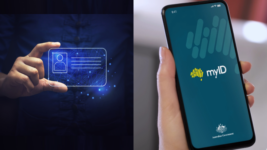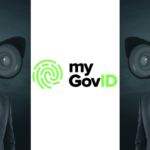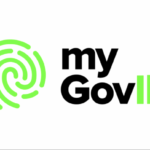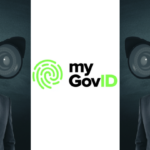MyGovID Rebrands as MyID, Raising Concerns of a Mandatory Means of Intrusion and Control

“Our goal is to make myID a digital ID for everyone, so you can safely participate online in an increasingly digital Australia,” explains the voiceover narrating a new online clip, which sets out that “it’s goodbye to myGovID and hello to myID”, in a development that doesn’t change the way the Australian Government Digital ID System (AGDIS) operates but is significant in terms of optics.
Comprised of federal, state and territory politicians, the Data and Digital Ministers Meeting announced in February 2023 that a new “voluntary” national digital ID was to be rolled out. And this was followed by the release of the National Strategy for Identity Resilience report in July, which established short, medium and long term plans in regard to the rollout of the digital ID.
The Australian Taxation Office (ATO) announced on Wednesday that the digital identity service known as myGovID would now be known as myID, which tends to suggest that we may all soon require our own digital ID, despite the scheme being spruiked as opt-in. And this has been a concern of privacy experts since the Coalition commenced trialling a small version of the digital ID in 2015.
The Digital ID Bill 2024 passed parliament in May. And as finance minister Katy Gallagher explained in her November 2023 second reading speech on the bill, the digital ID permits people to identify themselves online initially to government departments in order to receive services, without the imposition of having to hand over primary ID documents, and this is set to become economywide.
Indeed, this digital ID rebranding occurred on the same day that communications minister Michelle Rowland told The Sydney Institute that her government is seeking to establish an online duty of care for digital platforms, which comes a week after a proposal to establish a minimum age limit of 16 to social media was flagged, with no clear idea of how people will be made to prove their age online.
An economywide scheme
Despite the Coalition having initiated the move towards standardised digital identification close to a decade ago, the Liberal Nationals voted against the Digital ID Bill in May, as it doesn’t agree with Labor’s staged roll out of the initiative, as the conservative party maintains that the digital ID should be available to the private sector from the beginning of the national rollout.
ATO assistant commissioner Rob Thomas explained on Wednesday that regardless of the myID name change, 150 government online services are continuing to participate in the scheme. And he reiterated that myID only requires a person to verify their identify using two government ID documents on sign up, and from there it doesn’t require their production again.
The phased roll out,as Gallager explained to the lower house last year, involves the strengthening of the voluntary accreditation scheme for digital ID users, expanding the AGDIS so that the protections it provides are available to all constituents, it established additional privacy and consumer protections and it created a number of new office bearers to oversee the economywide scheme.
The reasons provided by the finance minister to warrant the expansion of the digital ID scheme last November was that the private sector was continuing to be locked out of it, which falls short of its economywide vision.
The new laws have established the Australian Competition and Consumer Commission (ACCC) as the Digital ID Regulator to oversee the “federated digital ID scheme”, and entities are able to seek accreditation to become one of three types of digital ID services providers, which involves attribute service providers, identity exchange providers and identity service providers.
An attribute service provider verifies and manages individual’s attributes, which are pieces of information about them, such as their date of birth. An identity exchange provider “conveys, manages and coordinates the flow of data”, while identity service providers generate and maintain digital IDs.
The AGDIS has had a range of different accredited entities operating within it since 2019, and that number has been growing ever since. This allows consumers to choose which entity will handle their identification information online, after it’s initially been verified with an attribute provider, and this ability to choose between different providers is known as the interoperability obligation.
However, the finance minister told parliament that certain government services that involve a high risk of fraud will only be available via myID, which instantly limits the choice for consumers if they want to access that particular service.
Australia Card 2.0
Gallagher further stressed last November that the “digital ID is not a card, it’s not a unique number, nor a new form of ID.”
The reason for stating this is that this country has resisted the imposition of grand identification schemes in the past, and this was especially so in regard to the Hawke government’s 1987 attempt to implement the Australia Card, which was a physical ID card with a photo attached.
So, formidable was the campaign against the Australia Card that it forced a double dissolution and a federal election. The scheme would have involved a central register, an identifying number, the ID card itself, the requirement to produce it for reasons of verification, certain organisations would have been required to use them and any changes to details would have required cross-party notification
The 2014 Financial System Inquiry considered that many Australians would likely object to a digital ID system due to it being perceived as a digital version of the Australia Card.
Chief concerns raised about the imposition of a digital ID involve the idea that civilian’s sensitive information will all be stored in the one place online, as well as for the potential of biometrics to be involved. Although the Department of Finance Media Team wrote to Sydney Criminal Lawyers in 2023, outlining that data won’t be stored in any one place online, while biometrics will be voluntary.
Yet, certain accredited entities are able to require biometric verification and an individual’s identity can be matched via a central hub that has been used to link up all federal, state and territory databases via an online hub, which includes passport and licence photos. And law enforcement can request access to such information with a warrant from entities allowed to retain it.
Shifting from opt-in to all in
The other key gripe about the digital ID scheme is it won’t continue as a voluntary initiative, but will eventually entail all civilians, as all will eventually be left without a choice but to use a digital ID in order to access some kind of service.
Last year’s National Strategy for Identity Resilience explained that for those who will have trouble using the digital ID, there will be nondigital options available “where practical”. However, it then goes on to foresee that in three to five years down the track, all credentials will need to be verified digitally, as physical copies will no longer be practical.
And as Greens Senator David Shoebridge verified with Communications deputy secretary James Chisholm during 5 November Senate estimates, Albanese’s social media age limit will require that everyone goes through an online verification process to prove their age when signing up for accounts on digital platforms and how such a verification process would take place online remains unknown.
Dataveillance expert Dr Roger Clarke told SCL in April last year, that schemes like the digital ID system “are always trumpeted as being voluntary at the beginning and are always designed on the assumption that they will become mandatory soon afterwards.”
The UNSW visiting law professor further added that “in the private sector, this technique is called ‘bait-and-switch”.






